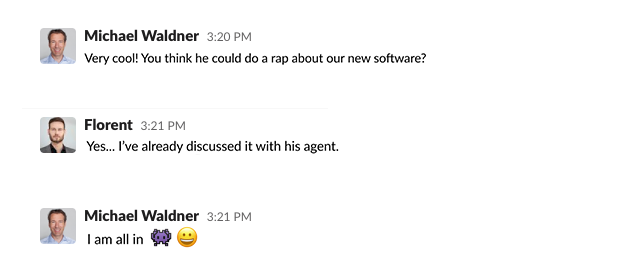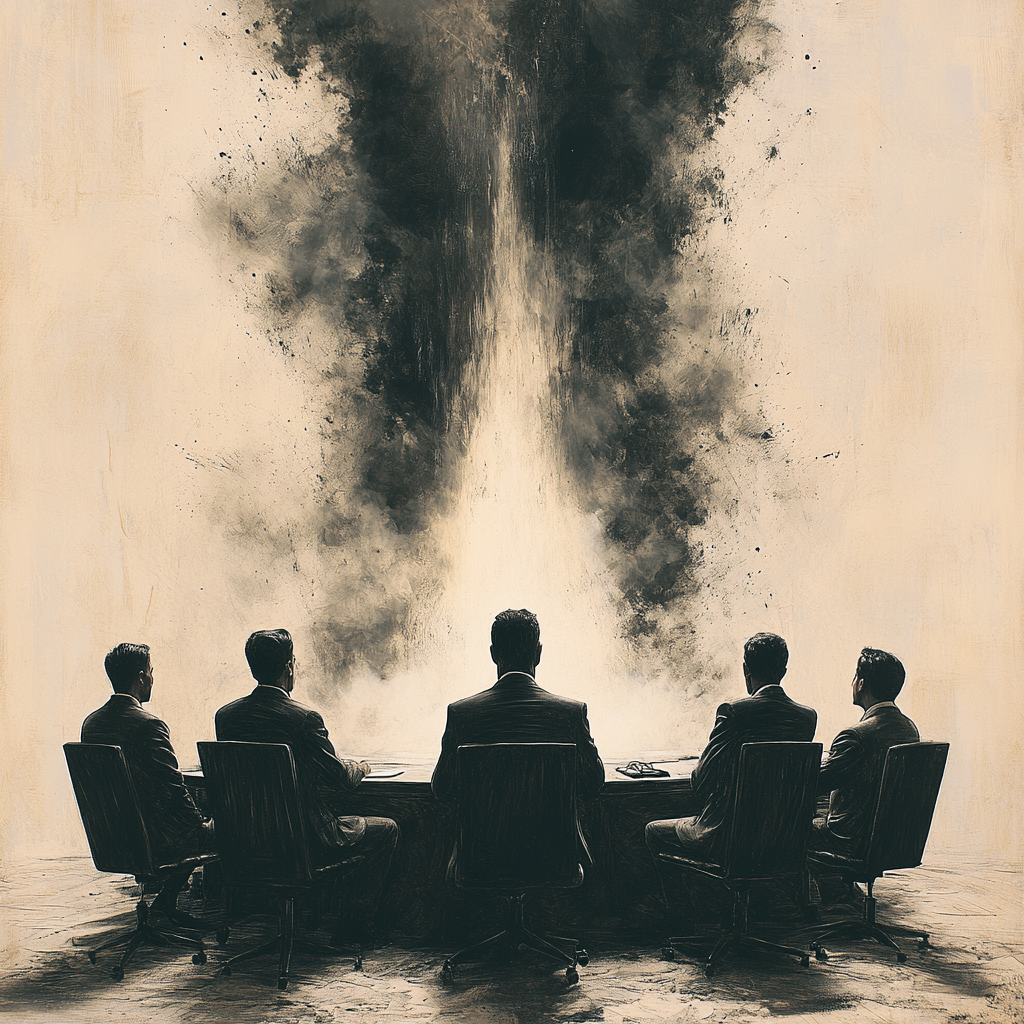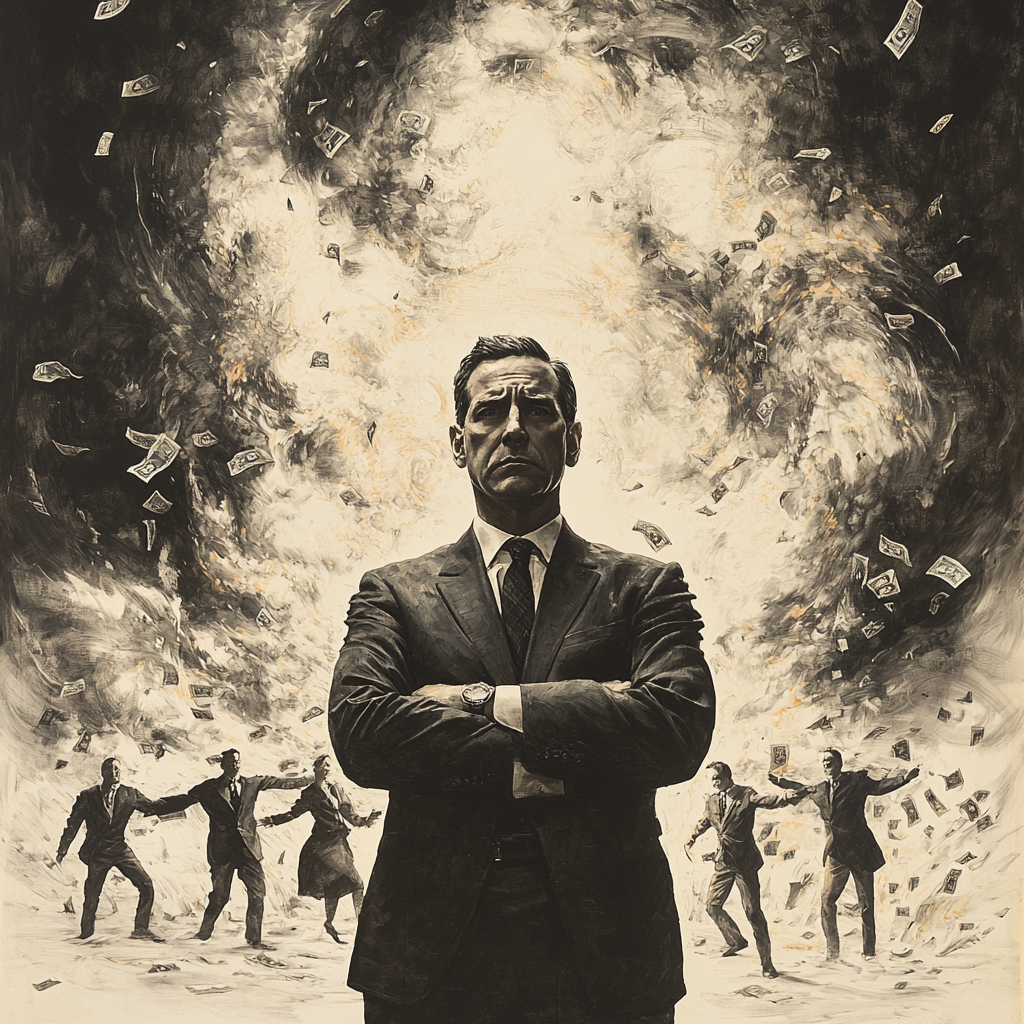Lessons From a Viral Corporate Rap Video: How to Build Memorable B2B Brands
Sunday night, 10 pm.
I’m watching cat videos on YouTube. (no judgement)
Then, on the right side of the screen, a video thumbnail catches my eye:

I click on the video. And within a few seconds, I’m completely hooked.
Chris, a skinny-looking guy, is doing something I’ve never seen before.
The video starts with Chris asking the audience to suggest complex words so he can… improvise a rap song about it.
Chris looks like a library nerd. Not the kind of guy you’d expect to see standing on a stage facing a large crowd.
Suggestions like “The Doppler effect”, “Cryptocurrency in the Yuan”, or “Harry Potter” are being shouted across the room.
People are smiling. You can tell what’s on everyone’s minds.
This is going to be an epic failure.
Then, the beats start kicking. And to everyone's surprise, Chris the nerd turns into a remarkable freestyle rapper.
Damn. This kid is talented.
Even if you're not into rap music, it's difficult not to admire his cleverness.
I’ve watched dozens of his videos and it’s getting late in the evening.
And this is when it hits me.
Earlier that week, my CEO asked me to find an idea to promote one of our new software.
I lead the Marketing for a company in renewable energy. We operate in a niche market known for its technical jargon and complex terms.
My brain starts racing. Chris is turning complex concepts into exciting songs.
What if I could do a collab with him to promote our new software?
From a marketing perspective, it would tick all the boxes.
- Engaging content, checked
- Potential for virality, checked.
- Out-of-the-box idea, checked
I lie on my bed feeling like a genius and fall asleep.
I wake up the next morning suddenly feeling much less confident.
In my excitement, I forgot that I needed to pitch the idea to my CEO.
I can play our discussion in my mind.
“How about promoting our new software with a freestyle rap?”
Sounds pretty daunting...
I need more confidence, so I decide to let the idea sink in for a few days.
Meanwhile, I show Chris’ videos to my wife. She loves them.
I tell her about my idea. She says I’m crazy but if I can pull it off this could be huge.
Next, I “slack” the video to my colleague Mathieu.
No reply for two days.
I’m getting nervous. Is this really a good idea or is it going to be a painful flop?
Then he finally answers and tells me he binge-watched Chris’s videos all night.
I tell him about my idea.
He gets really excited. He even offers his help.
Game on.
I do some googling and a few hours later I’m talking to Chris’s agent.
Sounds like Chris might be on board with the project…
Next, it’s time to pitch the idea to my CEO.
I figure he must see one of Chris’s videos before I give him more details about my idea. Or else, this is going to be a seriously awkward discussion…
I send him a Slack message.
“Hi Michael, I have a suggestion for the promotion of our software. Have you ever seen this guy's videos?”
I send him the video link.
He likes the idea instantly.

Fast forward to today; the video has been watched over 2 Million times on YouTube.

The week of the launch, our inbox got flooded with cheering messages from customers.
Heck, I even got a Twitter message from one of my favourite marketers, Noah Kagan.
Ok, so why am I sharing all of this with you?
Sure, it’s a sweet story.
But, to me, the most interesting part is the unexpected lesson behind it.
See, I initially wanted this video to increase sign-ups for our software. But in hindsight, I realised that I was pursuing the wrong goal.
Let me explain.
Every company’s target audience can be segmented at least in two ways:
Prospects that are in-market and prospects that are out of the market.
Prospects that are in-market want to learn about your product. They are looking to make a purchase soon.
Prospects that are out-of-market are a good fit for your product but they don't need it at the moment.
And because they are not in buying mode yet, most B2B companies aren’t paying attention to them.
But here comes the interesting part.
The latest studies show that as much as 95% of your target audience isn’t looking to buy right now.
Should you take this number with a grain of salt? Absolutely.
Does it vary across industries? Sure.
But here's the kicker: by focusing on the in-market prospects, most B2B companies only engage with approx. 5% of their target audience.

Don’t get me wrong, the prospects that are in-market are extremely important. They are the ones you can close deals with today.
But being able to influence the decisions of future potential buyers is how you build a competitive advantage in the long run.
It’s the difference between chasing short-term sales spikes and building long-term revenue growth.
Ok. At this stage you probably have one burning question in mind.
How do I influence prospects that are out-of-market to buy my products?
Please, don’t tell me with a rap song…
Fair enough.
Before I answer the “how” question, let me explain the “why”.
It all comes down to a misconception about how the buying process starts.
B2B Marketers like to think prospects searching for a new solution begin with an online search, followed by a thorough analysis of the products available in the market.
But in reality, when prospects are evaluating vendors for a new solution, one thing matters more than everything else.
Familiarity.
Prospects simply have too many choices. And it’s mentally draining to explore all the options. Hence they typically use their memories instead of researching from scratch.
And their memories are influenced by all the previous interactions with the vendors they evaluate: webinars, physical events, reports, videos, etc.
Now, when these prospects enter the market looking for a solution, these accumulated interactions influence the likelihood they remember your company and that you’ll be considered amongst the potential vendors.
Why most B2B companies can’t tap into their out-of-the-market prospects?
One of the biggest differences between sales and marketing used to be how they convert prospects into customers.
Short-term vs long-term.
Your sales team is closing deals right now. Their performances are evaluated month over month.
Marketers used to focus on the long term. Their success was measured based on their capacity to increase brand equity.
But digital marketing and attribution models have disrupted that. Marketers are now evaluated like salespeople:
By their capabilities to squeeze short-term revenue.
See, although marketers are expected to think long-term, in reality, they have no incentive in doing so.
In fact, as a Marketing leader, if you can’t quickly prove your ROI, you are out. There is a reason why CMOs have the shortest tenure in the C-suite.

This biases marketers to invest in short-term activities with immediate results. And this is why most B2B companies don’t have a long-term strategy that includes prospects that are out of the market.
How to tap into your out-of-market audience.
So far, we’ve learned that if prospects find out about your company only during the research process, chances are that you are already too late.
It means you’ll be thrown into a red ocean, forcing you to compete where your competitors are focusing all their marketing resources and budget.
Earlier, we discussed how your brand's cumulated interactions with prospects determine whether you'll be on their shortlist when they're ready to buy.
So you may assume that your company already has a wealth of content that is being leveraged to reach and influence your out-of-market audience.
The challenge is that traditional marketing assets like webinars, gated content, videos explainers, etc. are typically designed for short-term conversion—"act now"—rather than brand recall —"think of us when you're ready to buy."
And this is how my video could have ended up. A sales pitch optimised for in-market prospects.
So, how do you get your out-of-market audience to remember your brand when they enter the market?
You entertain them.
Entertainment is probably one of the most underrated marketing strategies in B2B.
Think about it. B2B leaders are bombarded from all sides. Emails. Phone calls. LinkedIn messages. Advertising. It's all about 'buy now', hence most of it goes unread, or ignored entirely.
As a result, the chances of them remembering your brand when they finally enter the market are about as slim as recalling what you had for lunch last Wednesday.
Frustrating, isn’t it?
Now, contrast that with entertaining content. People don’t just love consuming it—they also love to share it.
Why? Because sharing great content makes them look good. Or, as Thales Teixeira, former Harvard Business School professor, puts it: “Consciously or not, the sender intends to gain social capital in the process of sharing content.”
And with every share, your brand’s awareness grows organically.
Now we've come full circle.
The key to influence the decisions of future potential buyers is to create experience that increases brand recall.
There are many ways you can do this. For example, you can...
- Invest in a quirky video instead of another sales pitch disguised as thought leadership content.
- Swap the typical boring corporate booth at an event for something more fun.
- Or choose to partner with an advertising agency for your next campaign instead of pouring more money into Google Ads...
In short, to successfully influence your out-of-market audience, you must treat them like spectators instead of prospects.
In B2B, where most communications are "just business", entertainment cuts through the noise. It gets shared. And, most importantly, it activates brand recall.
It’s a mindset shift. From "Buy now" to "Remember us later."
B2B marketers have gotten too comfortable leaning on performance marketing.
Marketing used to be about emotions. Now, it’s about numbers.
We obsess over clicks, conversions, and fancy dashboards instead of producing remarkable experience for our audience.
It’s like thinking people go to the movies just for the ads.
But I get it. It's tough to go off the beaten path.
To your CFO, a budget request for creating entertaining content might seem like lighting money on fire.

Long-term strategies rarely get the support they deserve.
But in a world where prospects are drowning in "buy now" noise, adding more noise cannot be the solution.
And with AI-generated content rising, the noise is only going to get louder. Companies that can create memorable experiences will gain a significant competitive advantage.
It’s not anymore just about being seen - it’s about being remembered.
Last, I'd argue that the value of entertaining content goes far beyond brand recall.
Since we launched the video, I witnessed so many additional use cases:
- The Sales team uses the video as a fun way to reconnect with prospects.
- Some new hires told me the video influenced their decision to join us because they saw the human side of our brand.
- The advisory team is doing intro calls with new prospects that sometime mention the video, making it a nice icebreaker.
- Our CFO got approached by VCs that saw the video.
- We got ton of emails from customers telling us how much they loved the video.
So here’s my challenge: If you had a blank canvas, what experience would you create that your audience will remember?
For more information about the 95:5 rule, please refer to John Dawes, professor at the Ehrenberg-Bass Institute.
Feel free to reach out to me at florent.petitfrere@gmail.com
PS: If you do remember what you ate last Wednesday, feel free to also share that with me 😏